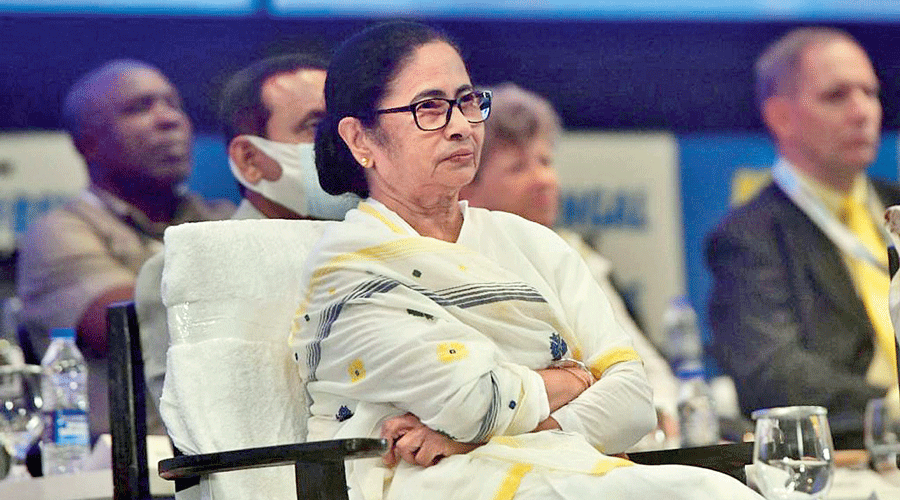By Subrata Majumder
West Bengal, once the epicentre for industry, has been fading in the industrial map of the country. At the time of Independence, it accounted for 30 percent of country’s industrial output. Now, it is 3 percent, according to official sources. Political belligerence, where political ideologies and ethnocentric leaders played the key role, downplayed the merit of the State to be the attractive industrial destination. Resultantly, State economy is in downturn, leading to unrestricted growth of unemployment.
Vying a challenge to retrieve industrial development, present government of West Bengal, Trinamool Congress, organises Bengal Global Business Summit (BGBS) every year since 2015. The main objective of the summit is to attract investment in the state and reinvigorate the industrial buoyancy and create more employment.
But the success belied. Investors were reluctant to invest in West Bengal. Indeed, they hustled in the summit, but refrained from investment. During 2015 to 2019, a total of Rs 12, 32, 856 crores worth of investment proposals were signed in the summit. But only 3 percent or Rs 37, 504 crore was invested in the State, according to reports sent by State to Centre.
The crucial to slow pace of the success of the summit is the lack of confidence and trust of the investors. Since 1991, when the nation made a leap in economic reforms, West Bengal, run by CPI(M) led Left Front, opposed reforms. Focus continued on rural development, leaving industrial development on the back burner. Chief Minister Buddhadeb Bhattacharya during his tenure in the last leg of the Left Front rule made some efforts to bring big houses like Tatas but his method was flawed angering the farmers whose land was forcible taken away for the site of the Nano car plant. The CPI(M) had to pay a heavy price for thi folly in the 2011 assembly polls.
Hopes resurfaced for industrial development with the LF government defeated in 2011 and replaced by TMC. But, soon hopes plunged with TMC’s political belligerence and leader Mamata’s image of anti- industrialism, stemmed from anti- Tata missile for setting up Nano car project in the state.
Unemployment reached peak and the State came under the grip of mounting social problems. Increase in unemployment escalated political corruption and antagonised investors with rising red tape and Tola Baji (a forceful extraction of commission from small businessmen), instead of invoking ease of doing business and providing incentives for investment. According to Care Rating survey in 2023, West Bengal ranked at the bottom of 24th in the economic ranking.
During the five years period from 2016 to 2021, a total of 21,521 factories were shut down, out of which 271 were big houses, according to Department of Environment of West Bengal.
In contrast, Vibrant Gujarat summit became the boon to industrial investment attraction in Gujarat. Now, it is described as institution and not an annual event by Prime Minister Narendra Modi.
Vibrant Gujarat Summit geared up Gujarat the 3rd biggest receiver of foreign direct investment during October 2019 to December 2022. In contrast, West Bengal trailed behind at 10th rank. In investment intentions (Industrial Enterprise Memorandum), Gujarat emerged 2nd highest potential destination for investment, as compared to West Bengal fraying at the bottom of the list.
Big houses and MNCs are rushing for investment in Gujarat. Investment proposals by Air Bus and Micron Technology for semiconductor manufacturing are the cases in point .This is despite the fact that Gujarat is geopolitically more risky, being near to Pakistan and engulfed by 52 percent of the land as desert.
There are 3 trajectories of industrial development in West Bengal. First, since the Left Front government came to power in 1977 and emerged as the longest ruling party in the State (34 years), focus was made on rural sector. It developed the farm sector, but undermined the growth interdependent of both agro and industrial base economies. Resultantly, though West Bengal hogged the limelight for agro development, industrial development nosedived.. These translated the economy in an unbalanced template, causing disincentive for investors.
Second, industrial development in West Bengal can be viewed from the perspective of industrial development in developing nations, like in East Asia and South East Asia. When Communist China went for open door policy, opening the economy to foreign investors and private sectors, posing a big challenge to South East Asian countries (mainly ASEAN nations) for global factory for the West, West Bengal depended on agro-economy, negating the global changes in technology upgradation and the global integration for manufacturing.
The third perspective arises with West Bengal’s volte face to 1991 reforms in India. When most of the state governments initiated new industrial policies in the wake of reforms, keeping pace with Central Government new industrial era , West Bengal posed a silent observer of the reforms. This led to an intense competition among the states for investment keeping Bengal far behind.
Nevertheless, West Bengal has special advantages to edge other states. One, it is bestowed with ample natural resources under the soil of Sonar Bangla (fertile land), and second its geographical location in the east, which harbours for border trade with four nations and North East. Emphasising on these two strong parameters, which no other state embraces, West Bengal can usher a strong turf for border trade. It can be pivot to India- ASEAN connectivity – the paradigm shift of Modi’s dynamism to rein in Asia under Act East policy.
The 7th BGBS is scheduled on November 22-23 in Kolkata in a political situation when the TMC supremo is emerging as a power centre in the opposition bloc INDIA. Mamata Banerjee is virtually number two in terms of stature among the INDIA leaders. The big industrial houses in the country like the Ambanis, Adanis, Birlas and Tatas are quite aware of the political potential of Mamata. Further, Bengal is now a strike free state with the state labour department always active in intervening in the disputes when ever those arise. It is unthinkable that in Bengal, on the eve of pujas, there is no dispute in bonus and no reports are there of strike actions which was a common feature during the Left Front rule.
Many big industries have started taking interest in investing in Bengal in the recent days. Some big houses may be attending the summit. The CM has to exploit the present favourable political image to extract big investments from these industrialists. She has to ensure that the promises are turned into reality on the ground, not just remain as MoUs. Bengal with its big advantages like skilled labour, natural resources, no industrial dispute can be an ideal place for both foreign and domestic investment if the TMC government and the CM can create that confidence among the investors. Bengal has better human development indicators compared to Gujarat, it is time, the state government deploys all its energy on ensuring big investments for the industrialization of the state. (IPA Service)

 Trinamool Congress Is Getting Maximum Political Mileage From Puja Festival In Bengal
Trinamool Congress Is Getting Maximum Political Mileage From Puja Festival In Bengal 